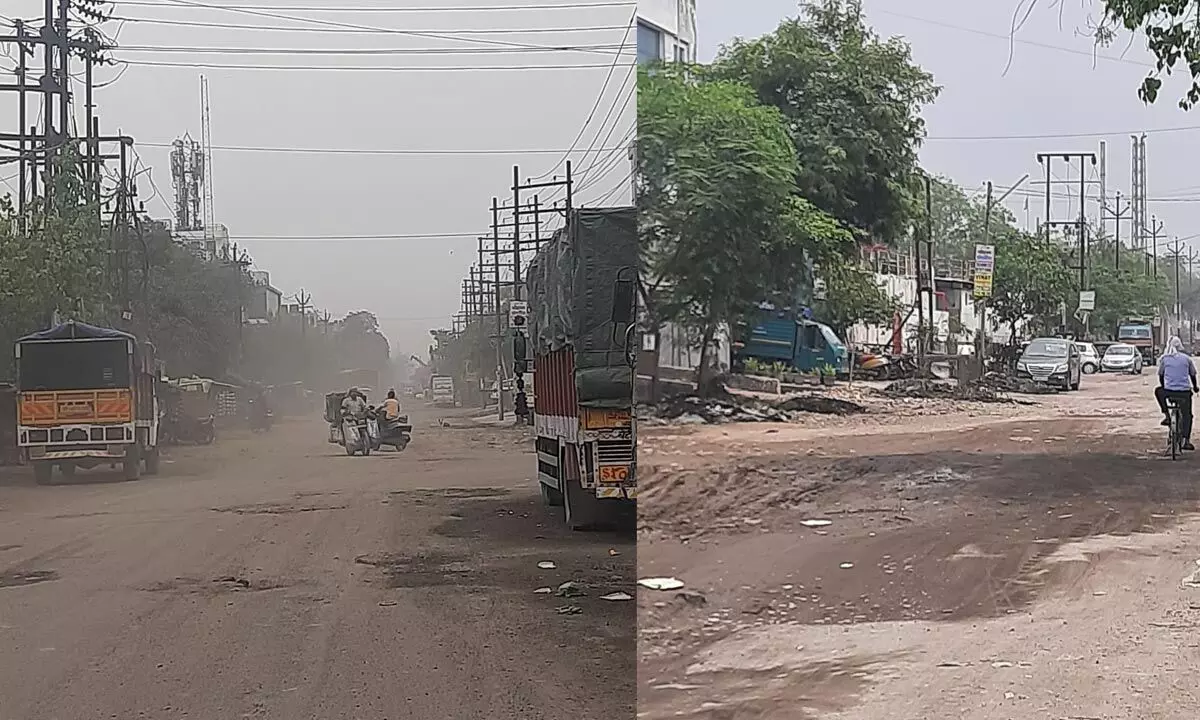UP's Sahibabad industrial area wears a bleak view
Majority factories either closed down or downsized due to new subdivision policy; Pollution a big issue; Polluting units shut down or relocated to other areas
image for illustrative purpose

Policy Conundrum
- Setup in 1970, SIA employs about 5 lakh people
- Much of the workforce is back after the Covid pandemic and lockdowns
- But there have been lay-offs and closure of units
- The units were huge, some running into tens of acres of land
- However, many factories became sick
- In some cases, children of the original allottees didn't want to continue
- This led to subdivisions
- Proposed rules stipulate minimum size of the subdivided plots to be 500 sqm
- Whereas SIA wants it to be 250 sqm
New Delhi: Vibrancy and stagnation cohabit in the Sahibabad industrial area, in Ghaziabad bordering Delhi. There are compounds or clusters of smaller units, complete with good roads, proper infrastructure, guards, etc. These have been the result of subdivision of earlier, bigger units. Then there are vast tracts of real estate, with closed or downsized factories, presenting a depressing scenario and exhibiting all the signs of a ghost industrial township.
The policy of subdivision changed a few years ago, says Mukesh Gupta, general secretary, Sahibabad Industries Association (SIA). "The new policy is not conducive for carving out smaller units from big estates."
The issue of subdivision in the area arose with the new rules and norms governing industry in the Delhi-NCR in the last 30 years. Pollution became a big issue; polluting units were shut down and shifted to other areas.
The Sahibabad industrial area was set up in the 1970s, predating the better-known Noida nearby. The units were huge, some running into tens of acres of land. Over the years, many factories became sick or their businesses shrunk; in some cases, the children of the original allottees didn't want to continue. This led to subdivisions, which were earlier supported by policy, Atul Bhatia, owner of Brite Paint & Chemicals, tells Bizz Buzz.
Once upon a time, his factory employed 50-60 people; now it's about tenth of that. When the policy regulating subdivisions was reasonable—which was till 2017—many bigger plots got subdivided. The smaller units, which came into being, are well-maintained; these are flourishing, employing a good number of people.
"Huge plots are lying idle," says Savita Bhaskar, who heads the SIA's committee on subdivisions. "The need of the hour is flexibility on the part of the government. With imaginative planning, a lot many enterprises like IT parks and diagnostic centres can be set up in the area. This will boost economic growth and development and generate jobs."
The state government, however, wants to revise the subdivision rules. Before the process of UP Assembly election began, the government came up with draft rules on which comments were sought from stakeholders. The most controversial of them is: "Maximum area proposed for sub-division shall not be in any case more than 50 per cent area of originally allotted plot. All the required amenities including roads, parks/greens, and facilities/utilities, shall be planned within the proposed portion (50 per cent of plot area) of plot, proposed for subdivision."
By allowing subdivision on only half of the land and then creating roads, parks, etc., within this, very little saleable land is left, says Gupta. "This will once again make the project unviable."
Bhatia points out that, if this provision is implemented, there would once again be the issue of 50 per cent of the land remaining utilized.
There is also the contentious issue of the minimum plot size in the subdivided plot. The proposed rules stipulate the minimum size of the subdivided plots to be 500 sq m, whereas the SIA wants it to be 250 sq m.
The policy logjam has checked the transformation and development of the area which is spread over 1,500 acres of land and is home to more than 1,400 units. The bigger units include Dabur India, Tata Steel (earlier Bhushan Steel), the public sector BEL, and Havells. Many major units, like that of Atlas Cycles, have shut down.
As in other industrial areas, the service sector enterprises have made their presence felt at Sahibabad too -auto showrooms and workshops, hotels, banquet halls, etc.
As mentioned earlier, the infrastructure is pathetic. Some arterial roads are tolerable, but others offer a rollercoaster ride. Some places are dust bowls. Drainage is bad, with storm water drains clogged with trash; there is no sewerage system available. As a local business says, "People don't live in an industrial area. There are no votes here for politicians to worry about. Hence the negligence."
The Sahibabad industrial area employs about half a million people, according to the SIA. Much of the workforce is back after the Covid pandemic and lockdowns. There have been lay-offs. Ram Kumar is one such worker who runs a small stall.
The pandemic gave the factory owners an opportunity to fire workers, he says. As it is, the wages are low - Rs 7,000 to Rs 8,000 per month for unskilled workers and somewhat higher for the skilled people. This is not the case, Gupta says, for the minimum wages are higher than that generally businesspersons pay that. In fact, wages have actually gone up after the pandemic because there was a dearth of employees.
The wages can go higher if policy cobwebs regarding subdivision are cleared. This will unlock the immense value of the vast pieces of real estate, attract new investment, and employ many more people.
The new policy is not conducive for carving out smaller units from big estates
- Mukesh Gupta, general secretary, Sahibabad Industries Association (SIA)

